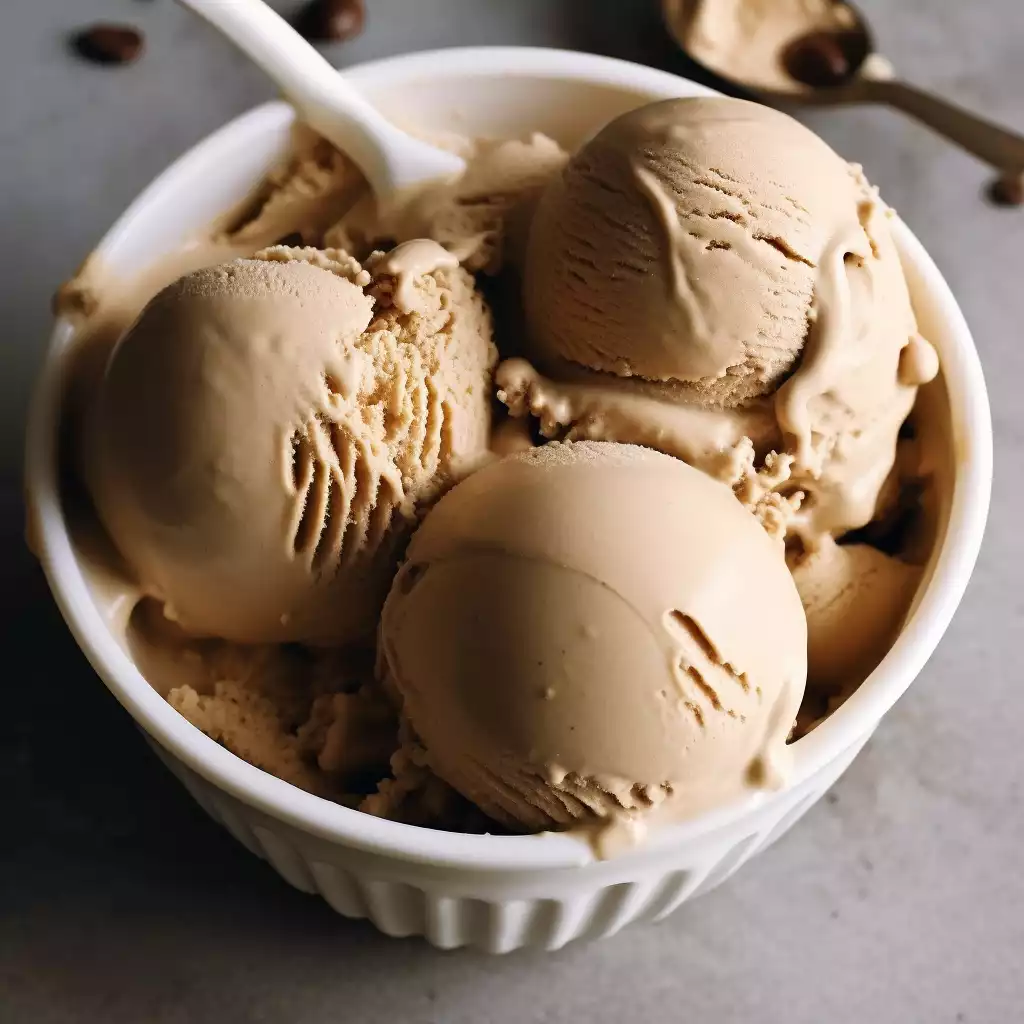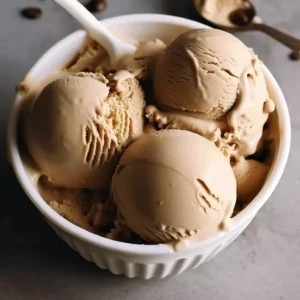
Indulging in the rich, creamy delight of homemade Coffee Ice Cream is a treat for the senses. Originating from the heart of dessert lovers, this recipe combines the bold flavor of coffee with the smoothness of cream, creating a frozen delicacy that’s perfect for any occasion.
While it might seem like a daunting task, fear not, for I’m here to guide you through each step, ensuring your journey to coffee ice cream bliss is smooth and satisfying.
This recipe, though simple in its ingredients, holds a legacy of comforting warmth and decadent flavor. Coffee, a beloved beverage around the globe, takes center stage, complemented by the richness of double cream and the sweetness of sugar.
Combined with the silkiness of egg yolks and the subtle aroma of vanilla extract, every spoonful promises a symphony of taste sensations.
Don’t be intimidated by the idea of making your own ice cream. With just a handful of ingredients and a bit of patience, you’ll be rewarded with a frozen dessert that rivals any store-bought counterpart.
Expert Tip: For a stronger coffee flavor, consider using espresso powder or freshly brewed coffee instead of instant coffee granules.
Milk: Adds a creamy base to the ice cream, providing a smooth texture and balancing the richness of the cream.
Double Cream: Contributes to the luxurious creaminess of the ice cream, ensuring a velvety mouthfeel with every bite.
Sugar: Sweetens the ice cream and enhances the flavor profile, harmonizing with the bitterness of the coffee.
Coffee Granules: Infuses the ice cream with robust coffee flavor, creating a delightful contrast against the sweetness.
Egg Yolks: Thicken the ice cream base and add richness, resulting in a luscious consistency that melts in your mouth.
Vanilla Extract: Enhances the overall flavor profile with its aromatic sweetness, balancing the boldness of the coffee.
Expert Tip: Gradually temper the egg mixture by slowly adding the warm milk and cream, whisking continuously to avoid curdling.
Expert Tip: Ensure the milk and cream mixture is heated gently over low heat to prevent scorching.
Yes, instant coffee can be used as a substitute for coffee granules in this recipe. Simply adjust the quantity to suit your taste preferences.
While an ice cream maker is recommended for optimal results, you can still make this recipe without one. Simply pour the mixture into a shallow dish and freeze, stirring occasionally until it reaches the desired consistency.
Homemade ice cream is best consumed within a week of preparation for optimal freshness and flavor. Store it in an airtight container in the freezer to maintain its quality.
Absolutely! Feel free to experiment with different flavorings such as chocolate chips, caramel swirls, or even a splash of liqueur to personalize your Coffee Ice Cream.
While this recipe contains dairy and eggs, you can explore alternative ingredients such as coconut milk or nut-based creams for a dairy-free version. Adjustments may be needed to achieve the desired texture and flavor.
Here are some more recipes for you to enjoy! If you my recipes don’t forget to rate and leave a comment.
If you have any recipe suggestions, please do not hesitate to ask me. A great way to stay in contact with me is through Instagram, Facebook, Twitter and YouTube. Don’t forget to tag me @CookwithNabeela in your recipe photos!

Subscribe now to receive my latest recipes directly in your inbox. Stay up-to-date and never miss out!
Add your first comment to this post